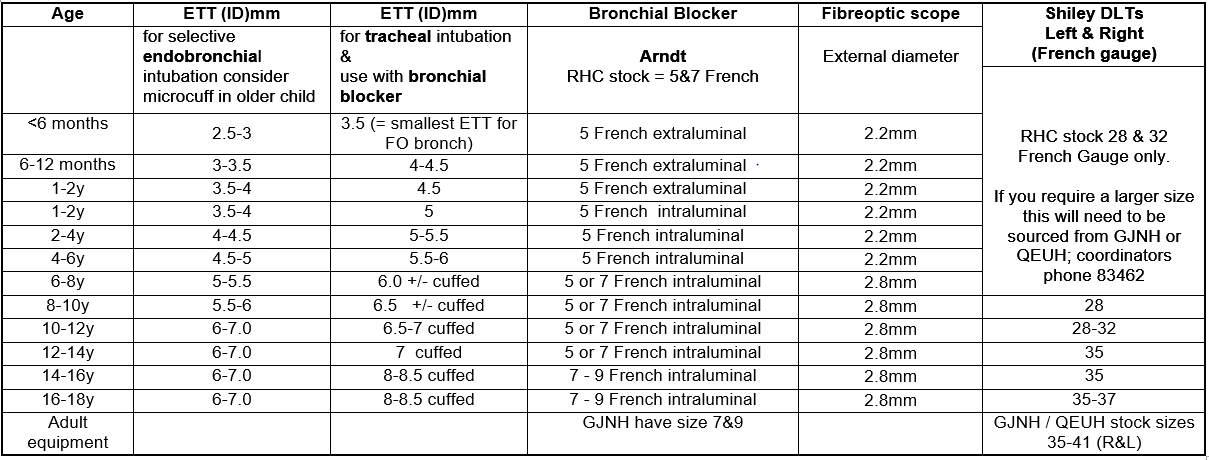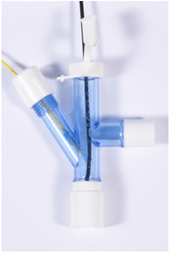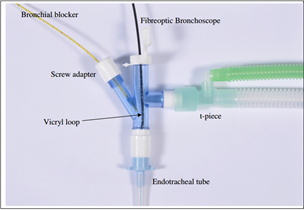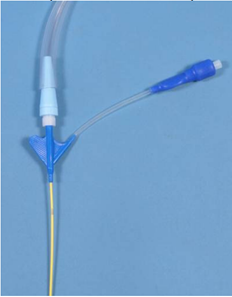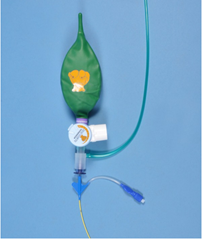One lung ventilation & bronchial blocker guideline
exp date isn't null, but text field is
Objectives
This guideline is for paediatric anaesthetists and operating department staff and is to assist with planning for & institution of one lung ventilation for open thoracic or thoracoscopic procedures in anaesthetised children when deflation of a lung is necessary.
Scope
Children requiring one lung ventilation.
Audience
Paediatric anaesthetists and anaesthetic assistants.
|
Assemble these items before connection to the patient. Screw adaptor should be opened enough to allow easy movement of blocker. |
LUBRICATE WELL - it's easy to damage the small scope |
|---|
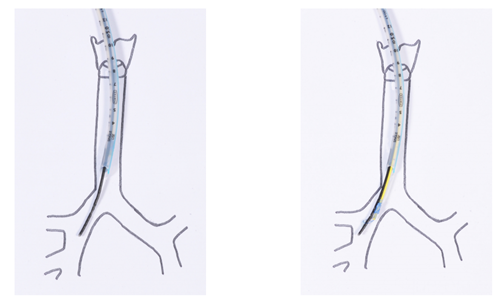
Advance the scope into the bronchus, then advance the blocker over the bronchoscope.
You may need the vicryl loop a bit tighter than shown on the above picture.
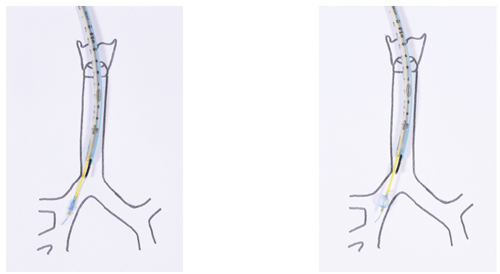
Withdraw the bronchoscope but keep the balloon on the blocker in view, inflate the balloon under direct vision until it just occludes the bronchus & note the volume required.
When the blocker is confirmed as in the correct position, tighten the screw adapter to keep it secure & remove the vicryl loop by unscrewing the red & white cap from the proximal end of the blocker.
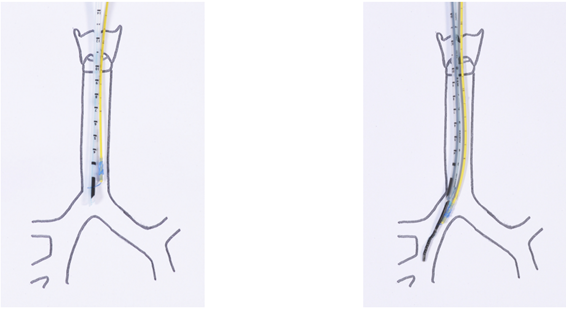
Lubricate tube v well, align blocker to blue line = posterior = large circumference side if ETT & pass through larynx under direct vision.
Blocker will advance easily but beware withdrawal is ‘sticky’ as vicryl loop will tend to catch.
Pass Bronchoscope into bronchus then advance blocker onto bronchoscope.
Position blocker in the same way as if it were intraluminal.
|
Conical adapter in kit is to allow suction if required to help the lung deflate
|
One way of applying CPAP – clear plastic adapter is in blocker kit
Opaque white connector with side port that fits green oxygen tubing = straight t-adapter (GE healthcare) |
|---|
Alternative CPAP system allowing measurement of CPAP
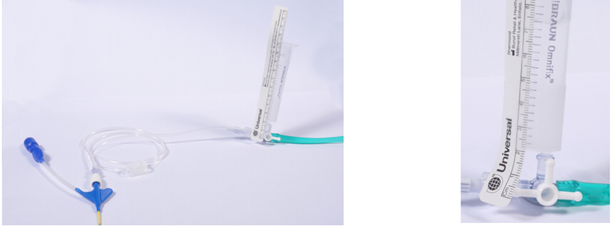
Connect green tubing to O2 (0.5 -1 lpm usually sufficient). Level 3 way tap with chest = 0 on scale of the ruler. ALWAYS have 3 way tap open to all ports, turn on O2 then fill open syringe barrel with saline to desired level of CPA
- Wald SH, Mahajan A, Kaplan MB et al, Experience with the Arndt Paediatric Bronchial Blocker. British Journal of Anaesthesia 2005; 94 (1): 92-94
- Bastien JL, O’Brien JG, Frantz FW, Extraluminal use of the Arndt Pediatric Endobronchial blocker in an infact: a case report. Canadian Journal of Anesthesia 2006; 53(2): 159-161
- Golianu, B, Hammer GB, Pediatric Thoracic Anesthesia. Current Opinion in Anaesthesiology, 2005; 18: 5-11
- Cook Medical, Arndt Endobronchial Blocker Set, Cook Incorporated, 2008 ( this is the leaflet stuck onto the packet of the blocker)
- Cook Medical, Arndt endobronchial blockers - click on video button to view video demonstrating technique of insertion and placement. (Youtube version here)
Last reviewed: 01 December 2021
Next review: 31 December 2024
Author(s): Graham Bell, Deborah Fordyce
Approved By: Clinical Effectiveness


